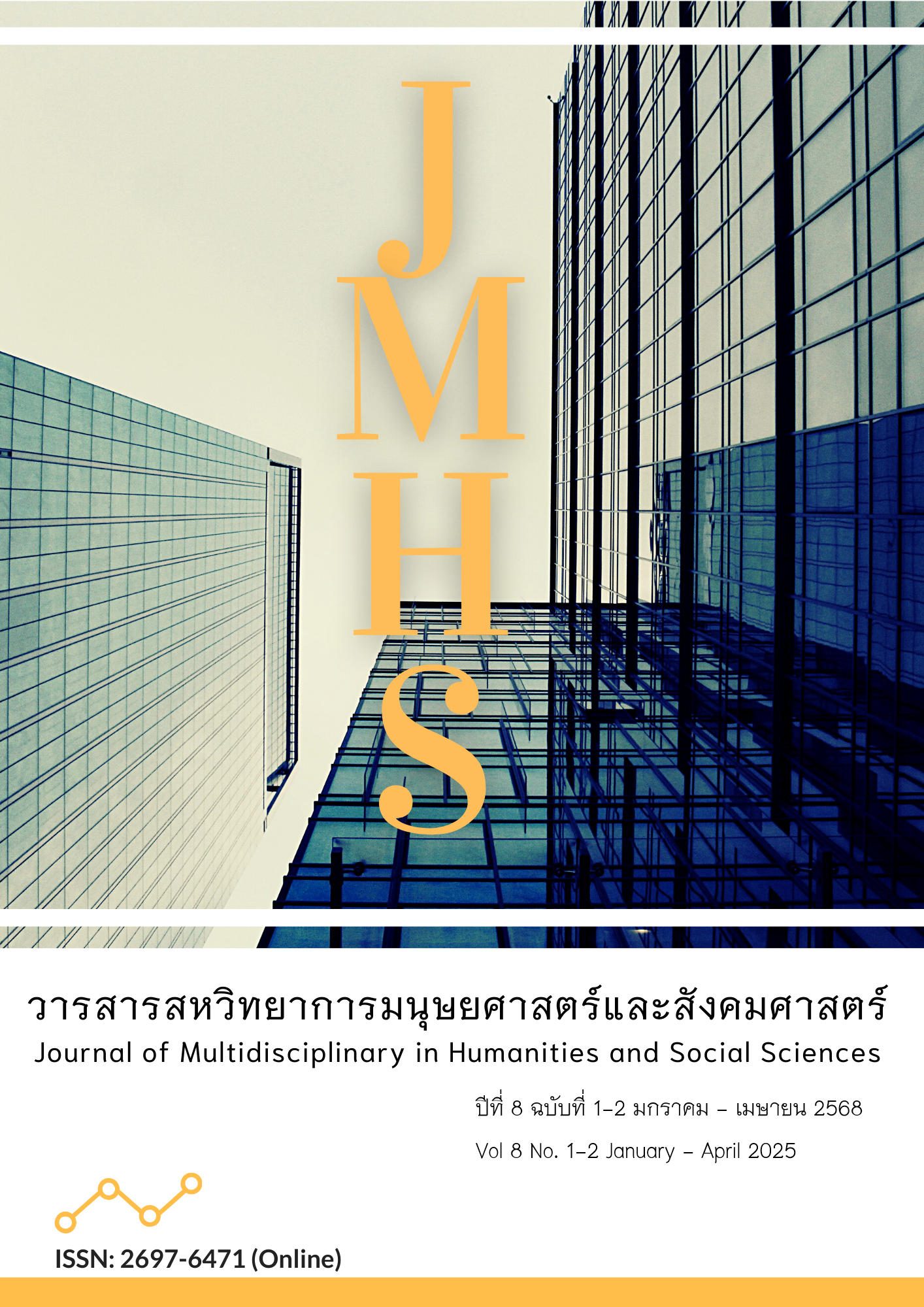A Study of the Evolution of Visual Language in Chinese Painting from Traditional Ink Painting to Contemporary Ink Painting
Main Article Content
Abstract
This study explores the visual language characteristics of traditional Chinese ink painting and contemporary ink painting, as well as their development trends in the context of globalization and modern artistic movements. The research sample includes 30 traditional ink paintings from six periods spanning from the Sui and Tang Dynasties to the modern era, as well as interviews with 8 contemporary ink painting artists and 2 art critics. The study adopts a literature review and semi-structured interviews for data collection, and uses Gombrich's "Schema and Correction" theory as the theoretical framework, employing iconographic analysis and thematic analysis for data interpretation. The research findings are as follows: 1. The visual language of traditional ink painting is centered on brushwork, composition, and aesthetics, pursuing the artistic ideal of "harmony between form and spirit," deeply influenced by Confucian, Buddhist, and Taoist philosophies, resulting in a unique system of artistic expression. 2. The visual language of contemporary ink painting has undergone significant transformation, with more diverse themes and compositions, as well as the integration of modern artistic elements into brushwork techniques. This shift is profoundly influenced by social and cultural changes in the global context.
3. Gombrich's "Schema and Correction" theory provides a systematic analytical framework for the evolution of the visual language of ink painting. Overall, contemporary ink painting, while expanding the diversity of themes and compositions, has gradually incorporated modern art elements under the influence of globalization and dynamic socio-cultural factors. In conclusion, contemporary ink painting not only expands the diversity of themes and compositions but also integrates modern artistic elements influenced by globalization and social-cultural dynamics.
Article Details

This work is licensed under a Creative Commons Attribution-NonCommercial-NoDerivatives 4.0 International License.
Views and opinions appearing in the Journal it is the responsibility of the author of the article, and does not constitute the view and responsibility of the editorial team.
References
Cahill, J. (1984). The compelling image: nature and style in seventeenth-century Chinese painting. Cambridge: Harvard University Press.
Cahill, J. (1997). Chinese painting. New York: Rizzoli.
Chu, S. H. (2012). The cultural logic of Gombrich's art and illusion. Journal of Tianjin Academy of Fine Arts, (4), 45-49.
Fan, B. (2008). Chinese painting art history of figures volume. Jiangxi: Jiangxi Fine Arts Publishing House.
Fang, W. (2004). Imprint of the heart. Shanghai: Shanghai Fine Arts Publishing House.
Gao, M. L. (2010). From elite to small narratives: the cultural strategies of contemporary Chinese ink art. Journal of Contemporary Chinese Art, 2(1), 23-45.
Gombrich, E. H. (Ed.). (2012). Art and illusion: a psychological study of the representation of images (C. K. L. Yang, B.Z. & Fan, J.Z., Trans.). Guangxi: Guangxi Fine Arts Publishing House.
Han, L. (2015). Traditional ink painting and bird painting: explaining the origins and edge changes. Beijing: China Academy of Art Press.
He, Z. L., & Yue, Q. S. (2023). Polarised composition and aesthetic expansion in bird and flower paintings. Art Research, (6), 117-120. https://doi.org/10.13318/j.cnki.msyj. 2023.06.013
Kong, L. Q. (2008). History of Chinese paintings of birds and flowers volume. Jiangxi: Jiangxi Fine Arts Publishing House.
Kou, Y. X. (2006). Chinese ink painting: origin and aesthetic expression. Yunnan: Yunnan University Press.
Lu, H. (2017). Contemporary Chinese ink and wash 1978-1999. Beijing: China Social Science Press.
Lu, P. (2021). The history of contemporary Chinese art. Shanghai: Shanghai Fine Arts Publishing House.
Men, T. (2024). Contextual and philosophical reflections on Chinese ink painting. Beauty and Age (Mid Edition), (2), 18-20. https://doi.org/10.16129/j.cnki.mysdz.2024.02. 051
Ren, X. Y. (2024). Formation and transmutation of the concept of brush and ink in Chinese painting. Research on Art Education, 18, 23-25.
Shen, Y. B. (2017). Images and meaning: a history of modern art in Britain and America. Beijing: Commercial Press.
Wang, H. S., & Hu, G. H. (2008). Chinese Painting Art History of Landscape Volume. Jiangxi: Jiangxi Fine Arts Publishing House.
Wang, K. G. (2019). Study on the "Language Turn" of Chinese painting from literati traditional ink and wash to modern ink and wash(Doctoral Dissertation). Northeast Normal University.
Wang, N. (2010). A preliminary study of the psychological laws of visual images; from Arnheim's "Diagram" to Gombrich's "Schema"(Master's Thesis). Shanghai Normal University.
Wang, W. (2016). A treatise on landscape painting. Beijing: People's Fine Arts Publishing House.
Wu, G. (1995). Wu Guanzhong's record of art. Beijing: People's Fine Arts Publishing House.
Wu, H. (2014). Contemporary Chinese art: a history. London: Thames & Hudson.
Wu, H. (2016). Exhibiting experimental art in China. Beijing: China National Photographic Art Publishing House.
Zhang, C. (2021). The connotation and construction law of balanced beauty in Chinese painting composition. Art Education, 6, 155-158.

